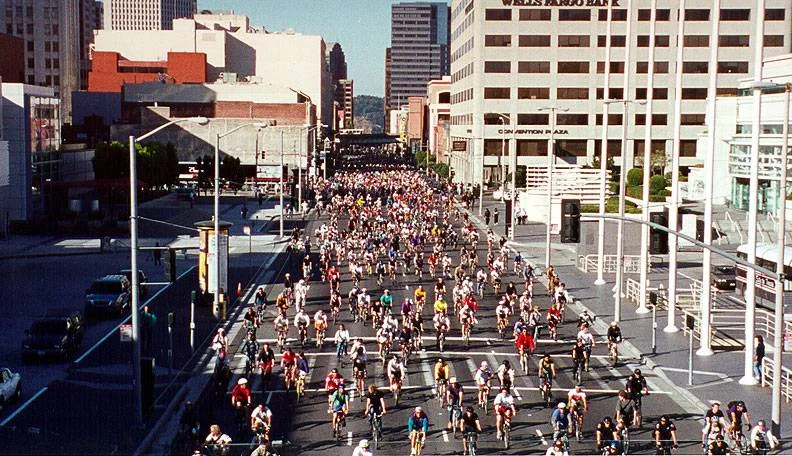The History and Impact of Critical Mass: A Global Cycling Movement
Written by Afonso Ramos on April 15, 2025

The History and Impact of Critical Mass: A Global Cycling Movement
Critical Mass began as a simple idea: what if cyclists came together in large enough numbers to claim their rightful space on roads typically dominated by cars? From this concept emerged one of the most influential grassroots cycling movements in history, transforming urban mobility across the globe.
Origins in San Francisco
The first Critical Mass ride took place in San Francisco in September 1992, initially called “Commute Clot.” Around 48 cyclists gathered at Market Street to ride home together, creating safety in numbers. The name “Critical Mass” was inspired by a scene in the documentary “Return of the Scorcher,” where cyclists in China would gather at intersections, building up to a “critical mass” before crossing against motorized traffic.
What began as a practical response to dangerous cycling conditions quickly evolved into something more significant. By riding together, participants created a temporary community, reclaiming public space and demonstrating the potential for bicycle-friendly cities.
Global Expansion
Through word of mouth, media coverage, and later the internet, Critical Mass spread remarkably fast. By the late 1990s, rides were happening in dozens of cities across North America, Europe, Australia, and South America. Today, Critical Mass events occur in over 300 cities worldwide, typically on the last Friday of each month.
The movement’s adaptability has been key to its success. While the core concept remains consistent, each city’s Critical Mass takes on local characteristics, responding to specific urban challenges and cycling cultures.
Philosophy and Structure
Critical Mass is often described as an “organized coincidence” rather than a formal organization. The movement intentionally lacks official leadership, formal membership, or central coordination. This decentralized approach has allowed Critical Mass to flourish across diverse political and cultural environments.
The slogan “We aren’t blocking traffic; we are traffic” encapsulates the philosophy behind Critical Mass. The movement asserts that cyclists are legitimate road users and challenges the car-centric design of modern cities.
Impact on Urban Policy and Infrastructure
Beyond the immediate visibility of the rides, Critical Mass has contributed to tangible changes in urban environments:
- Infrastructure improvements: Many cities have expanded cycling infrastructure in response to growing demand for safe cycling spaces.
- Policy changes: Critical Mass has helped push cycling onto political agendas, leading to bicycle-friendly legislation.
- Cultural shift: The movement has contributed to a broader cultural reassessment of urban mobility, challenging the dominance of cars.
Controversies and Challenges
Critical Mass has not been without controversy. Some critics argue that confrontational tactics alienate potential supporters and reinforce negative stereotypes about cyclists. Rides have occasionally resulted in tensions with motorists, pedestrians, and law enforcement.
In some cities, authorities have attempted to regulate or suppress Critical Mass rides, leading to legal battles over the right to assembly and use of public space. These conflicts have sparked important conversations about whose interests are prioritized in urban planning.
Critical Mass Today
While the peak of Critical Mass may have passed in some cities, its legacy continues through various cycling advocacy initiatives. Many cities now host official car-free days, bike-to-work events, and other cycling promotions that build on the groundwork laid by Critical Mass.
The movement has also influenced a new generation of cycling advocacy that combines direct action with engagement in formal planning processes. Organizations worldwide now advocate for cycling infrastructure, drawing on the visibility and community building pioneered by Critical Mass.
Looking Forward
As cities worldwide face challenges of congestion, pollution, and climate change, the principles behind Critical Mass remain relevant. The movement demonstrated that ordinary citizens could come together to reimagine and reshape their urban environments.
Whether you’re a longtime participant or just learning about Critical Mass, consider joining a ride in your city. Experience firsthand the joy, community, and empowerment that comes from transforming streets designed for cars into spaces for people - if only for a few hours each month.
The story of Critical Mass reminds us that significant change often begins with simple actions and that when people come together, they can transform not just their streets, but their societies.






